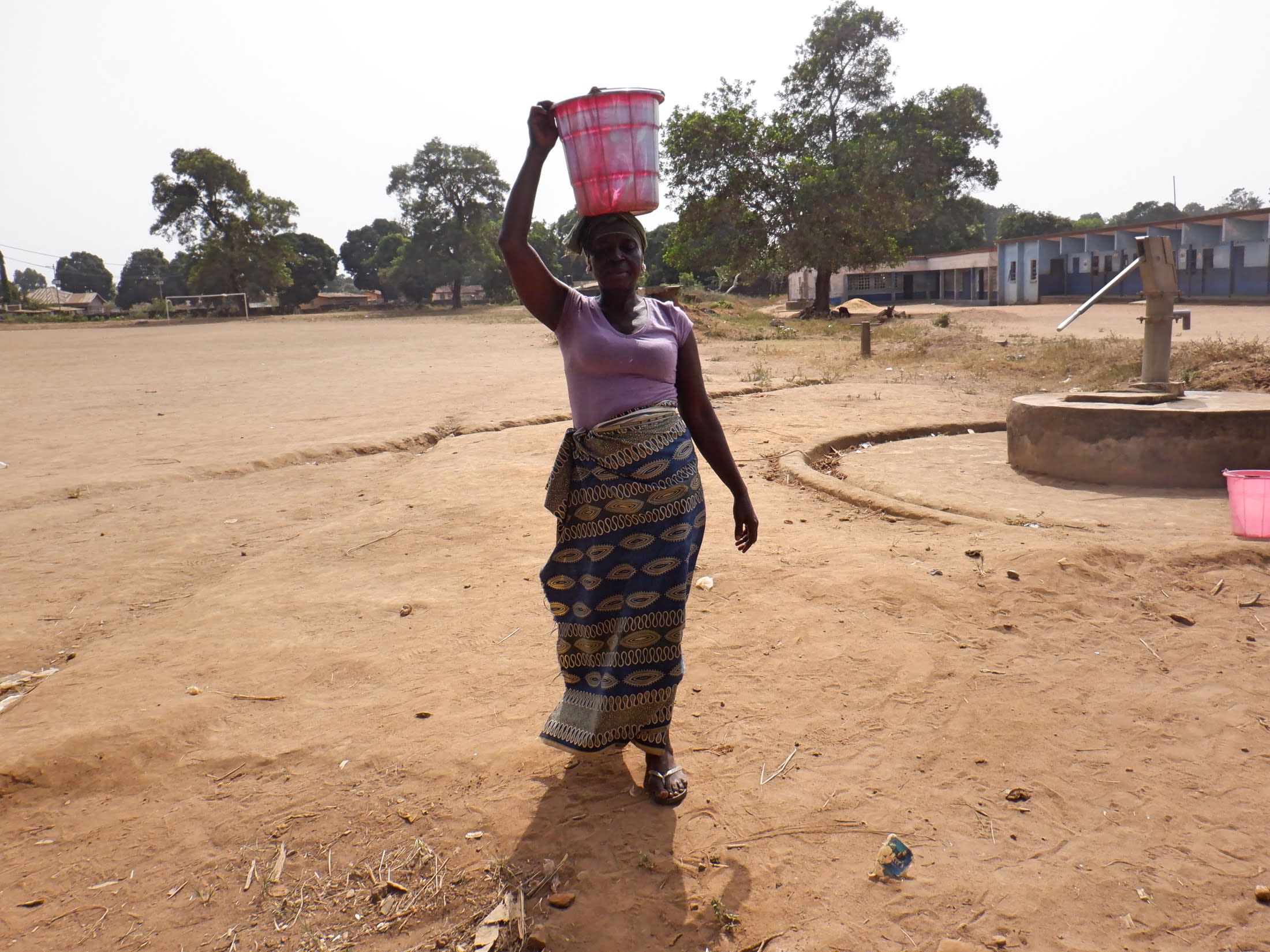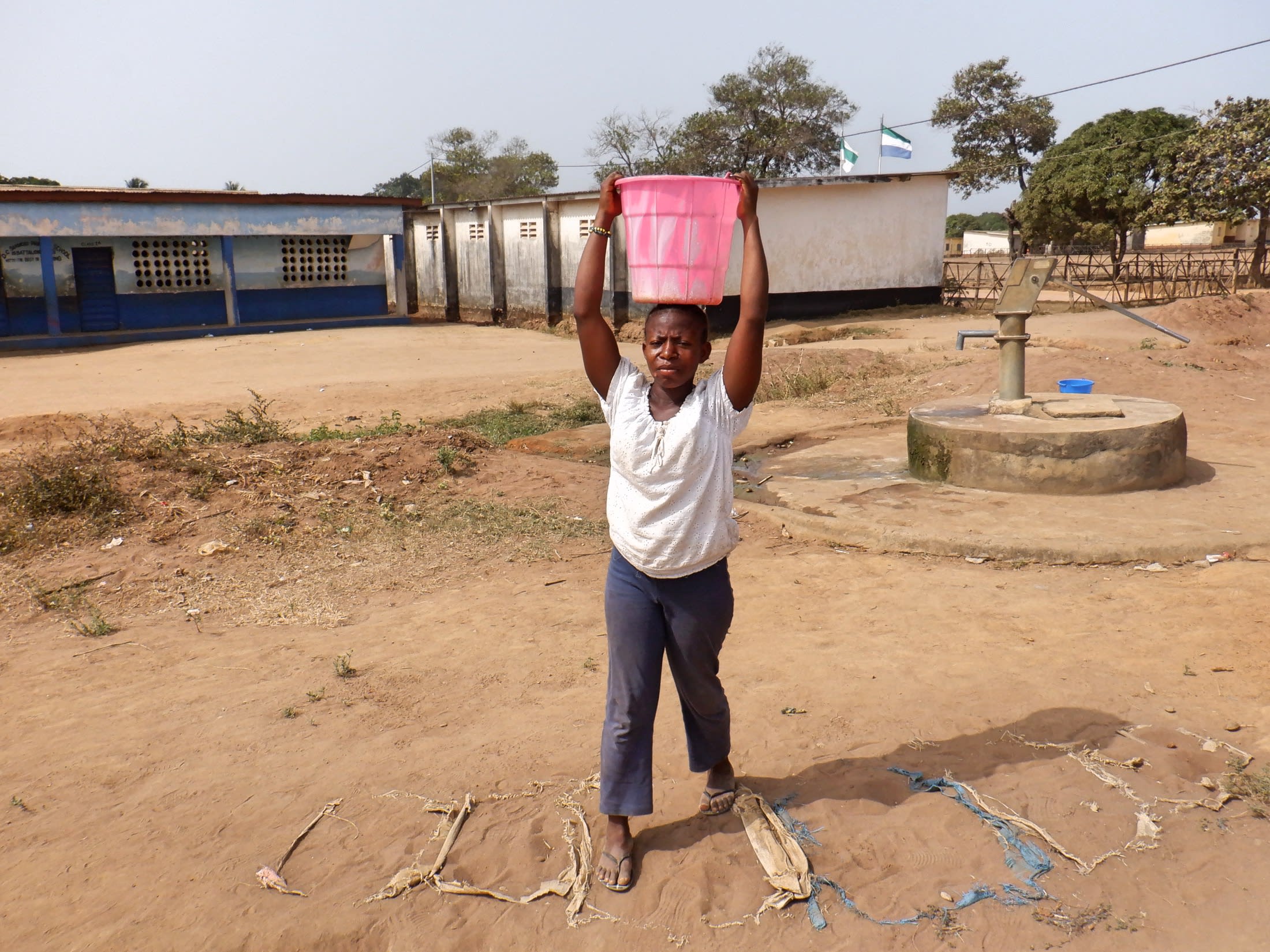Suctarr is bustling with people, but lacking water sources. As a result, its wells are always overrun with people jostling for their place in the long queues. Because of the lowering regional water table and the resulting strain on the water sources, they have both begun to dry out for several months throughout the year, from March to May. This leaves everyone unable to attend to their needs, let alone accomplish everything that they must do before the end of the day.

68-year-old trader Isata Serry (in the above photo carrying water) has no more patience for the constant struggle. "Really, [the] water situation in my community affects me greatly, and I am facing big challenges, especially during the dry season," she said. "The well gets overcrowded and people form a queue to access water and I do not have enough energy [to] wait for long due to my age. The huge population at the well can lead to quarrels and fights in the community."
With all the soldiers and their families clustered by the nearby airport, there are hardly ever enough resources to go around. In this area of the barracks closest to the security checkpoint, 120 people live off of three water sources: one public, one owned by a mosque, and the last by a school. This means the latter two wells are locked up during part of the day.
Between the water's seasonality and limited availability of the wells, the people of Suctarr are always searching for water wherever they can find it. Sometimes, those in search of water, including small children, must cross a treacherous highway to try the neighboring communities' wells—but those wells sometimes charge fees for their use.
"I decided to go in search of water to other communities, which caused me to pay [a] water fee," Isata S. said. "If the main water well produces [a] low quantity, I pay money to people to fetch water for me because I do not have enough energy to wait for long at the well. [The] water problem affects me greatly because I need enough water to do my domestic activities. Due to not having enough access [to] water in my community, my personal hygiene [is] hard to maintain. It causes me not to prepare food on time for my family. Also, my children go to school late."

"Sometimes when I go to the water well and it is overcrowded, the only way I can access water easily is [by joining] the queue," said 17-year-old Isata F (in the photo above).
"This situation causes me to go to school late and delay [laundering] my uniform and clothes. I must fetch water for my mother after school to cook and do other domestic activities, and this causes me [to] not [be] happy at home because [I] spend [so] much time fetching water. The weekend time I could have rest at home, I must rush to the well to collect some water. Sometimes the well gets populated, so I must find another water source. This causes me to spend all day at the well."
The water will come much faster to a rehabilitated well, meaning the lines will go down and will, along with other projects in the community, serve to provide adequate water to Suctarr's people.
Here’s what we’re going to do about it:
Well Rehabilitation
The well marked for this overhaul is dry for a few months every year and needs major work to supply adequate, clean water to the community year round. The pump will be removed, and a hand auger will be lowered inside and powered by a drill team. This hand auger will allow the team to drill several meters deeper to hit a sufficient water column that will ensure the well supplies water throughout all seasons.
As the team drills, casing will be installed, transforming the bottom of this hand-dug well into a borehole. PVC piping will connect this lower system directly to the pump, a construction that we know will also improve the quality of water.
Once this plan is implemented, everyone within the community will have access to safe drinking water in both quality and quantity, even through the dry months.
Hygiene and Sanitation Training
There will be hygiene and sanitation training sessions offered for three days in a row.
After our visit, the hygiene and sanitation trainer decided it would be best to teach community members how to build a tippy tap (a hand-washing station built with a jerrycan, string, and sticks). They will use these tippy taps for handwashing demonstrations, and will also teach about other tools like dish racks and the importance of properly penning in animals.
These trainings will also strengthen the water user committee that manages and maintains this well. They enforce proper behavior and report to us whenever they need our help solving a serious problem, like a pump breakdown.

 Borehole Well and Hand Pump
Borehole Well and Hand Pump
































